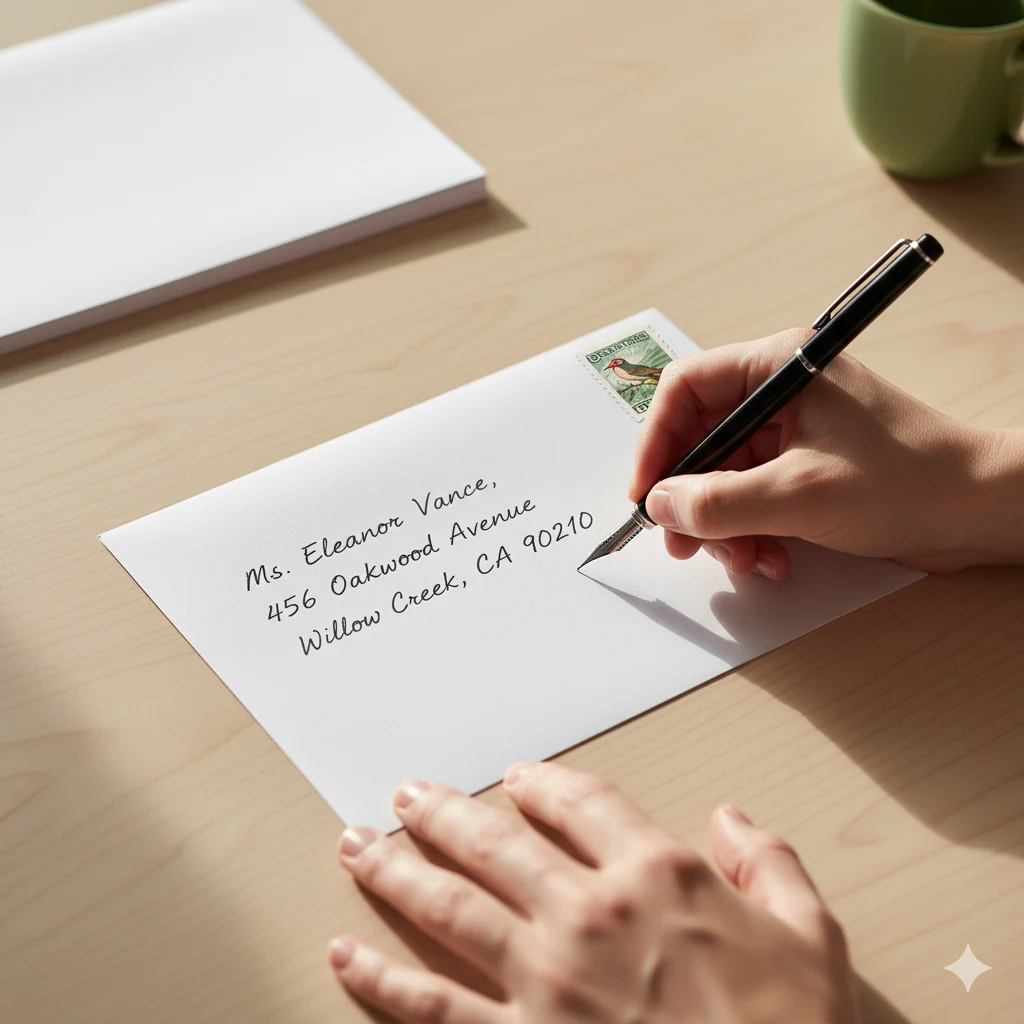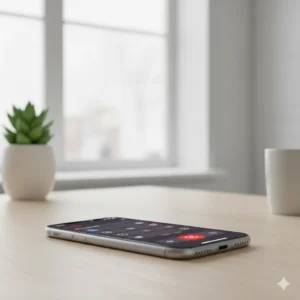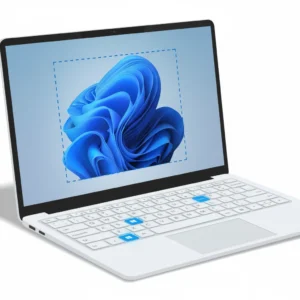In today’s digital world, sending a physical letter has become a thoughtful gesture — a small act that carries warmth and intention. But before your card or note reaches the right hands, you need to know how to address an envelope correctly.
This simple yet essential skill ensures your mail gets delivered quickly, professionally, and without confusion. Whether you’re mailing a birthday card, a job application, or an international parcel, following the proper mailing format makes all the difference.
Let’s walk through each step together so your envelope looks polished and gets to its destination safely.
🏷️ Step 1: Write the Recipient’s Address Clearly
The recipient’s address is the heart of your envelope. It tells the postal service where to send your letter — so accuracy matters.
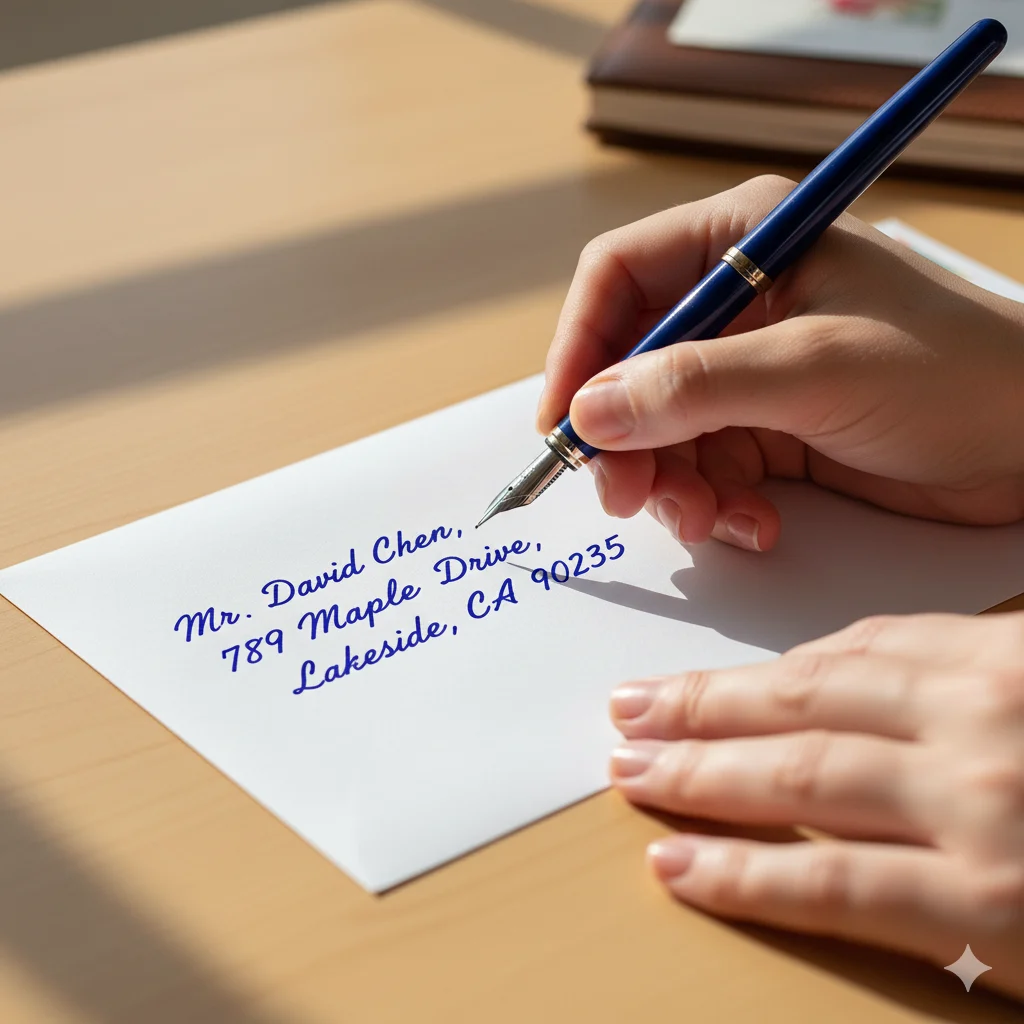
Start by placing the address in the center of the envelope, written neatly in three to four lines. Keep your writing aligned to the left, and use blue or black ink for clarity.
Example:
Mr. Thomas Allen
245 Maple Street
Springfield, IL 62704
For the best readability, write in uppercase letters and avoid punctuation marks. For instance:
MR THOMAS ALLEN
245 MAPLE STREET
SPRINGFIELD IL 62704
Using uppercase helps automated postal scanners detect and process your mail faster, reducing chances of delay or misdelivery.
🏠 Step 2: Add Your Return Address
A return address goes in the top-left corner of the envelope. It’s essential for ensuring your letter comes back to you if delivery isn’t possible.
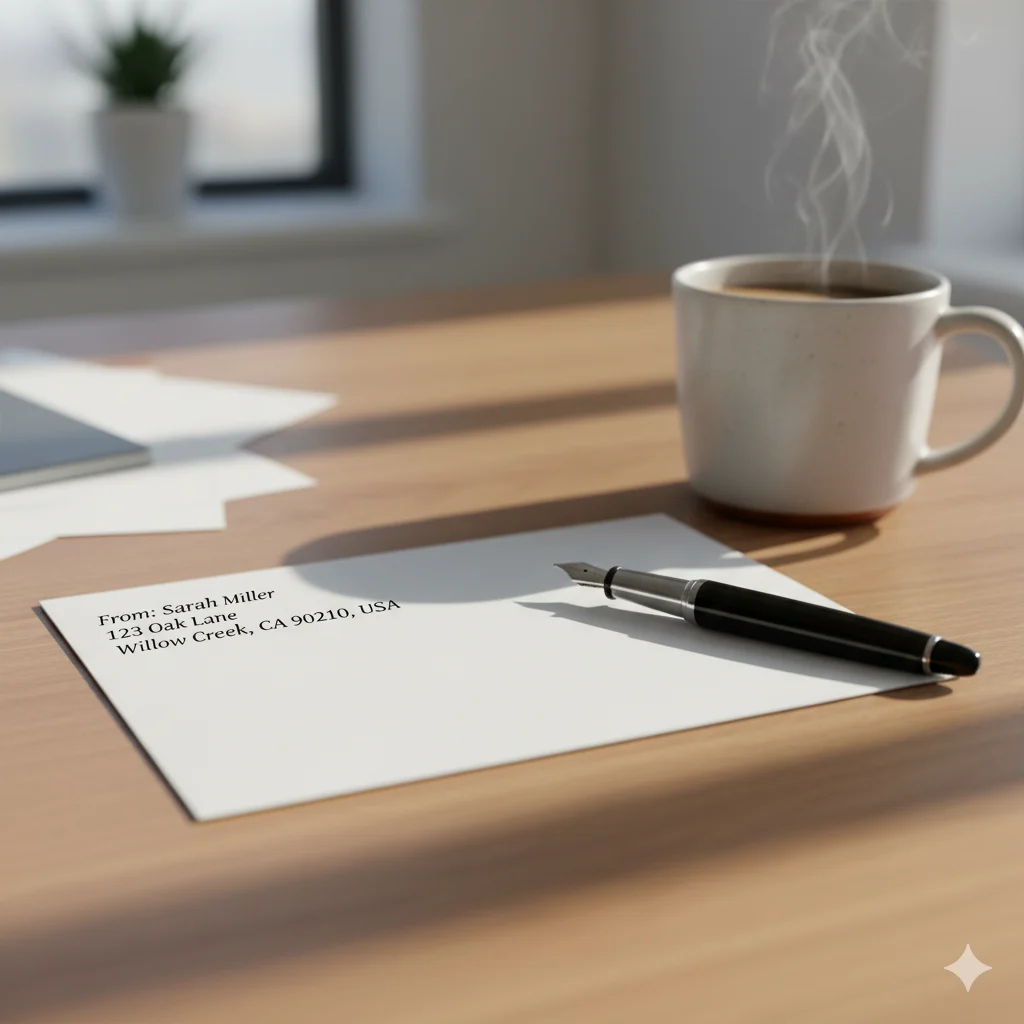
Example:
Emily Carter
123 Oak Avenue
Portland, OR 97205
This small detail adds professionalism and helps postal workers return undeliverable mail. Business letters and international correspondence should always include it.
If you’re sending formal or business mail, print your return address neatly or use pre-printed labels for a more polished appearance.
💌 Step 3: Place the Stamp Correctly
The postage stamp is what allows your letter to travel. Place it firmly in the top-right corner of your envelope.
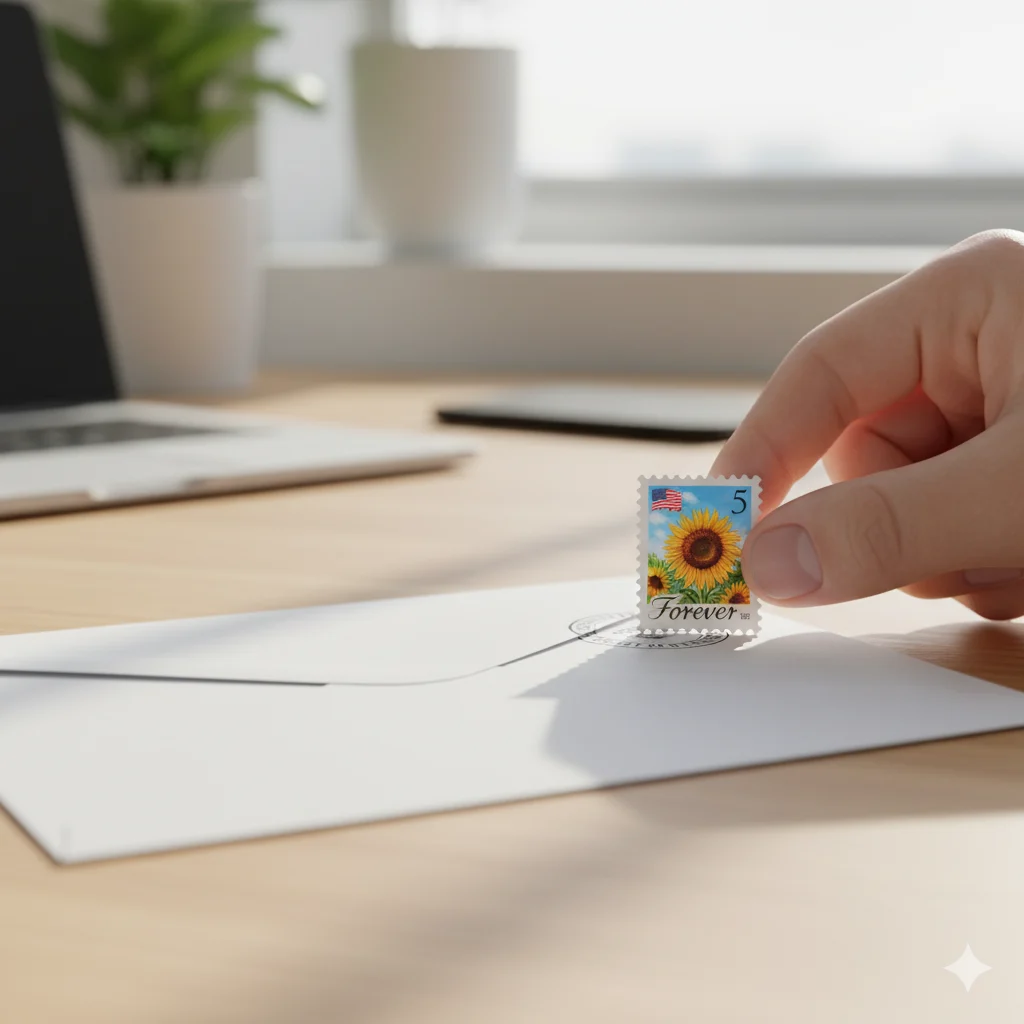
If your letter weighs more than an ounce or you’re mailing overseas, check postage requirements at your local post office. Using the correct amount of postage ensures your mail doesn’t get delayed or returned.
Avoid placing stickers or decorative marks near the stamp area — scanners need a clear view to process your letter.
Quick Tip:
For personal notes, choose creative or themed stamps. For formal letters, use classic or business-appropriate designs.
🌍 Step 4: Format for International Mail
When mailing abroad, accuracy is even more critical. Always include the country name in capital letters on the last line of the recipient’s address.
Example:
Ms. Charlotte Evans
12 Greenway Road
London SW1A 2AA
UNITED KINGDOM
Avoid abbreviations and check each country’s postal code format. For example, Canadian codes contain letters and numbers (like M5V 3C6), while Japan uses numeric-only postal codes.
You can also visit your postal service’s website to confirm address standards for your destination country. Correct international formatting prevents customs issues and ensures quicker delivery.
🏢 Step 5: Follow Business and Professional Etiquette
When sending a business letter or formal document, how you address the envelope reflects your professionalism.
Use formal titles such as Mr., Mrs., Dr., or Professor, and include the organization name if applicable.
Example:
Dr. Amanda Lee
Department of Chemistry
University of Chicago
Chicago, IL 60637
For companies:
Human Resources Department
BrightTech Solutions
123 Innovation Drive
San Jose, CA 95134
Avoid nicknames or abbreviations in formal contexts. A clean, correctly addressed envelope creates a strong first impression before your recipient even opens it.
🏡 Step 6: Add Apartment, Suite, or Unit Numbers
If the recipient lives in an apartment or works in a suite, don’t forget to include that information. You can either add it on the same line as the street address or directly below.
Examples:
Sarah Lopez
457 Oakwood Avenue, Apt 3B
Atlanta, GA 30318
Or:
John Roberts
500 Market Street
Suite 220
San Francisco, CA 94105
For P.O. Boxes, use this format:
P.O. Box 1524
Austin, TX 78767
Leaving out this information is one of the most common reasons for mail being delayed or misrouted.
🪶 Step 7: Double-Check Before Mailing
A few seconds of review can save you days of waiting. Before you drop your envelope into the mailbox:
✅ Verify all spelling and ZIP codes
✅ Check that your return address is complete
✅ Ensure the stamp is secure
✅ Make sure ink hasn’t smudged
✅ Keep writing away from the envelope edges
Postal services recommend verifying ZIP codes through their online tools. Even one incorrect digit can reroute your mail entirely.
💻 Step 8: Printing Addresses for Neatness
If you’re sending formal mail, printing the address can look professional and improve readability. Use a clean, modern font like Arial, Calibri, or Helvetica, in 12–14pt size, printed in black ink.
Avoid script fonts or decorative typefaces — while pretty, they can confuse postal scanners.
For invitations or business mail, printed address labels save time and look elegant. Just ensure the labels are securely attached and not glossy (so ink doesn’t smudge).
⚠️ Step 9: Avoid Common Mistakes
Many mail delays happen because of simple formatting errors. Avoid these common issues:
🚫 Using light-colored ink or markers that scanners can’t read
🚫 Forgetting the return address
🚫 Misplacing the stamp
🚫 Writing addresses too close to the edge
🚫 Over-decorating with stickers or tape
Keep your envelope design simple, clean, and easy to read — that’s what ensures a professional appearance and successful delivery.
💌 Step 10: Special Mailing Tips for Different Situations
- Wedding Invitations: Use formal titles and elegant fonts. Double-check spelling for every recipient.
- Holiday Cards: Send early to avoid postal rushes and delays.
- Packages: Write clearly or print labels directly onto the box.
- Confidential Documents: Use security envelopes with opaque patterns for privacy.
A well-addressed envelope isn’t just functional — it’s part of the message you’re sending.
💬 FAQs
Q1: Do I need a return address on personal mail?
It’s optional but recommended — especially if there’s any chance the recipient’s address might be incorrect.
Q2: Can I abbreviate street names?
Yes, use official postal abbreviations (e.g., St for Street, Rd for Road, Blvd for Boulevard).
Q3: What if my handwriting is poor?
Use printed labels for clarity. Clear, legible writing is more important than handwriting style.
Q4: Can I reuse an envelope?
Only if it’s clean, undamaged, and free of previous markings or barcodes.
Q5: What does “C/O” mean on an envelope?
It means “Care Of.” Write it before the recipient’s name if you’re sending mail to someone staying at another person’s address.
🌟 Conclusion
Addressing an envelope correctly might seem small, but it’s a reflection of your care and professionalism. Whether it’s a heartfelt thank-you note or an important business proposal, a properly formatted envelope ensures your message arrives promptly and makes a great impression.
Take a few extra minutes to double-check your address, stamp, and return details — because a well-prepared envelope carries not just paper, but your thoughtfulness and attention to detail.

